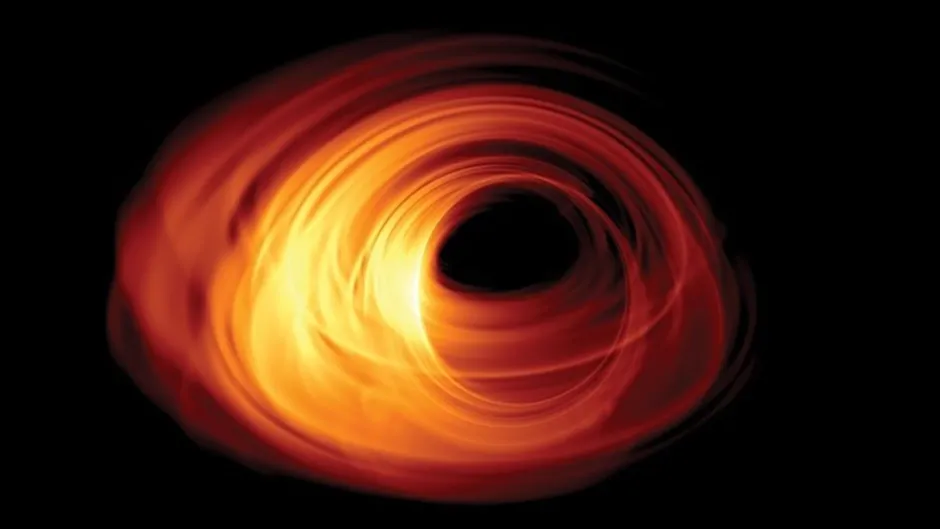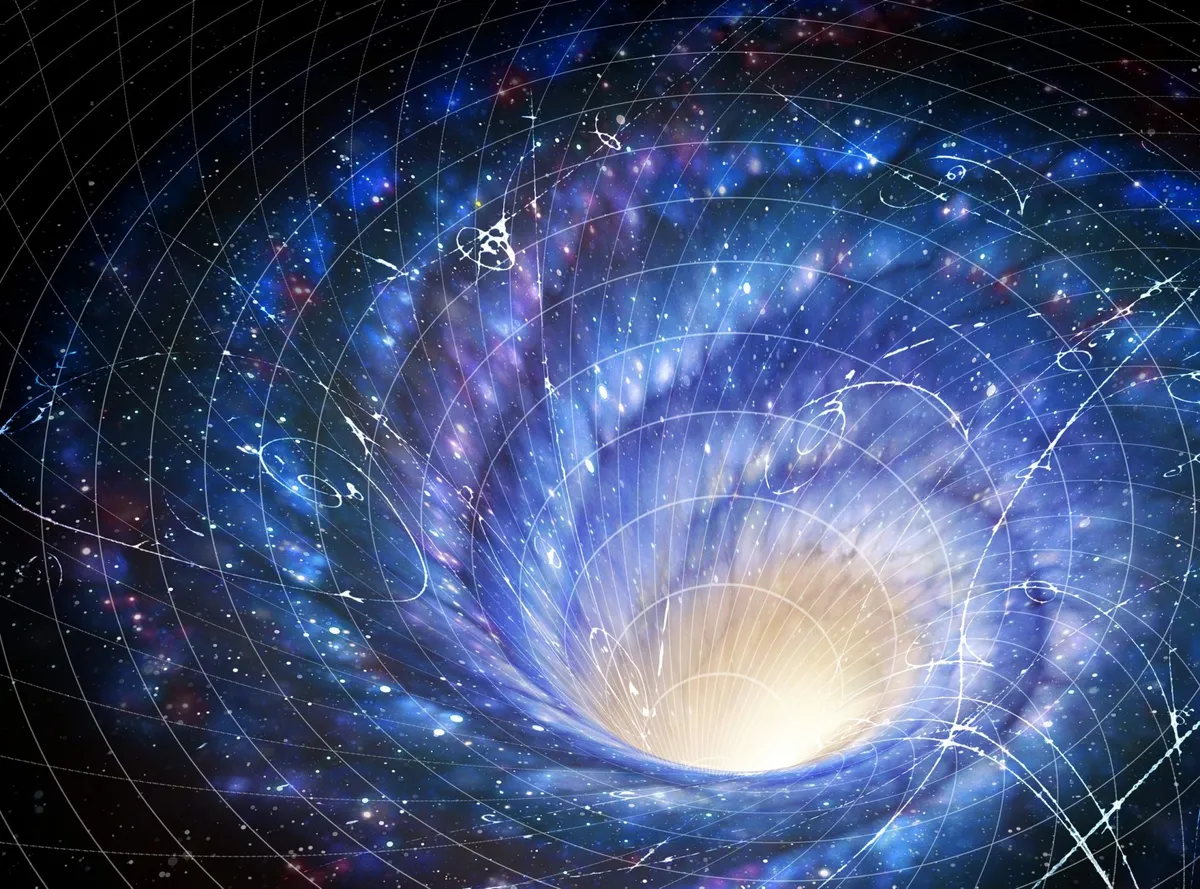A white hole is a time-reversed black hole – a region of spacetime where matter spontaneously appears and explodes outwards, rather than implodes and disappears as with a black hole.
White holes are the opposite of black holes, in that they spit out light and matter, rather than trapping it.
So far, white holes are purely hypothetical objects, but astronomers are contemplating how they could form in reality.

White hole as the end point of a black hole
A black hole forms when a massive star at the end of its life shrinks catastrophically under its own gravity down to an infinitesimally small point, or singularity.
All that is left behind from the stellar collapse is a grossly warped region of space, so where does the star’s matter actually go?
One possibility is that it explodes into another universe as a white hole.

The white hole has to be in another universe, because the defining characteristic of a black hole is that the event horizon, which hides the singularity from view, is one-way.
In other words, things that fall through it can never emerge again in our Universe.
For matter to pass between universes, the black hole and white hole must be connected by a wormhole – a tunnel through spacetime.
Some scientists suggest super-energetic objects such as quasars are white holes, and perhaps even the Big Bang was a gigantic version.
Do you think white holes and worm holes could exist? Let us know your thoughts by emailing contactus@skyatnightmagazine.com

